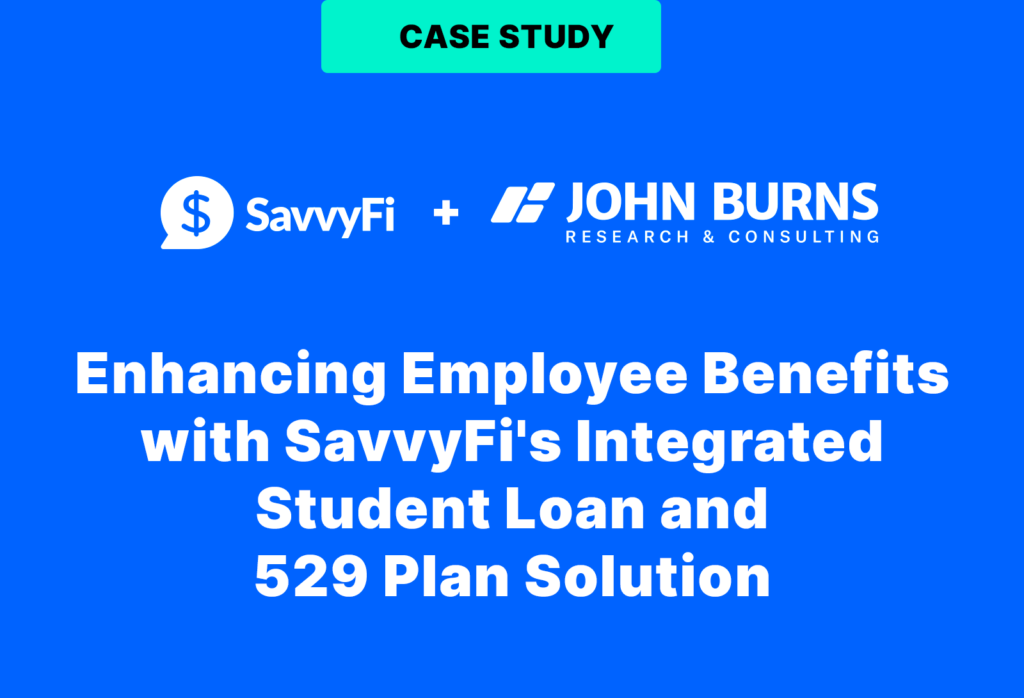Only 33% of U.S. parents are aware of 529 plans, according to an Edward Jones survey. This means that less than 33% actually understand what a 529 college savings plan is (as opposed to those that recognize it by name only), and even less have adopted one for their child’s college savings fund.
Less than one out of every three U.S. parents are aware of the 529 college savings program
In this article, we will run through how the 529 college savings plans were created, what a 529 plan actually is, how 529 plans “work,” and what you should know about them before you get started. After reading this article, you will hopefully be familiar enough with the 529 college savings program that you will feel comfortable starting the journey toward selecting the best 529 plan for your family.
What Is The Section 529 Plan?
The 529 program was created in 1996 as part of the Small Business Job Protection Act. The numbers ‘529’ come from section 529 in the IRS tax code, which was created to incentivize taxpayers to save for college by allowing their earnings to accumulate tax-free.
The 529 program was created by the federal government to incentivize taxpayers to save for college tax-free
While the 529 program is the brainchild of the federal government, the program is primarily “state-sponsored,” meaning it is administered to taxpayers through state agencies. There are currently 49 different 529 plans. Washington and Wyoming do not have plans; however, the District of Columbia does.
529 Plan Basics
To enroll in a 529 college savings plan, you need to decide which state-sponsored 529 program you would like to enroll in, whether you want to directly enroll in a plan or enroll in one through a financial adviser, and which investment options offered by your plan that you would like to invest in.
Families are eligible to sign up for most states’ 529 programs, regardless of the family’s state of residence or ultimate location of the beneficiary’s school. For example, a family in Tennessee could enroll in Utah’s 529 plan and use the funds for a college in California.
Certain state tax benefits may be affected by the 529 program that you select, but the federal tax benefits will be the same regardless of the 529 plan you ultimately enroll in.
A family in Tennessee can enroll in Utah’s 529 plan and use the funds for a college in California
Many state 529 plans provide direct-sold and adviser-sold options, but not all of them do. The direct-sold 529 plan is a “self-serve” plan that you enroll yourself in. You are responsible for selecting your investment options and monitoring/modifying your investments over time.
With an adviser-sold plan, sometimes referred to as an adviser-guided plan, your adviser will take the responsibility of managing your investment selection. Because of this, direct-sold plans are generally much cheaper than adviser-sold plans.
Families can sign up for the “self-serve” direct-sold 529 option or advisor-sold option in each state’s plan
The investment options in 529 programs generally range from ultra-low risk money market funds, which simply strive to preserve your money, to high-growth funds allocated toward stocks.
Most 529 programs offer over ten investment funds to make sure all account holders can find their desired investment based on their “risk tolerance” and growth requirements. While more options may seem beneficial, families enrolling in the direct-sold program can find the number of options debilitating.
What Are The Tax Benefits Of 529 Plans?
Your 529 account will any investment earnings to accumulate tax-free if they are used for qualified education expenses. For those that invest in funds with higher growth potential, this benefit can result in substantial federal tax savings.
Your 529 account will allow you to accumulate earnings tax-free if used for qualified education expenses
There are a couple of important distinctions to make when talking about 529 taxes. When you hear the term “tax-free” relating to 529 accounts, this is usually referring to federal capital gains taxes.
So, when you sell an investment that has grown above the amount or your original contribution, you will not have to pay taxes on that gain if the proceeds are eventually used for qualified higher education expenses or maintained within the 529 account. You will “recognize” this tax benefit every year that you sell investments for a gain in your 529 account by not paying taxes on those gains when you file that year’s federal income tax return.
There is another form of tax break that some 529 plans have – the state tax deduction. For some states, if you invest in their particular 529 program and are a resident of that state, the state will allow you to deduct a portion of your contributions on your annual state taxes. This benefit will recur every year that you contribute to that 529 plan, so long as the state maintains the deduction benefit.
Some states will allow you to deduct your 529 contributions when you file your state income taxes
Some states will actually allow you to deduct your contributions to any state’s 529 plan on your home state’s taxes. Residents of states that do not have state income taxes, however, are not able to qualify for any state tax benefits from college savings contributions.
The funds that are contributed to your 529 account are after-tax, so they will not be taxed again upon withdrawal. The earnings that result from your contributions are susceptible to penalties and taxes, however, if they are not used for “qualified education expenses.” In addition, 529 withdrawals occur on a pro-rata basis, which means that every withdrawal from your 529 account will include a portion of your contributions as well as earnings.
Only your 529 earnings are taxed and/or penalized if not used for qualified education expenses
To illustrate pro-rata withdrawals, consider a scenario where a family has saved $6,000 over the past few years, and those savings have grown to $8,000. In this scenario, $6,000 of the total $8,000 in savings, or 75%, are contributions, and the remaining 25% are earnings.
If the family decides to withdraw $6,000 for use on non-qualified expenses, $4,500 (75% of $6,000) will be withdrawn tax- and penalty-free, but $1,500 (25% of $6,000) will be added to the family’s taxable income in that year, in addition to being penalized by 10%, or $150.
What Are “Eligible Institutions” And “Qualified Expenses?”
For many parents, the potential penalties associated with not using 529 funds for eligible institutions or qualified expenses are a roadblock to starting their child’s college fund with a 529 account. This can lead to families delaying the decision to start saving, which can have significant costs due to missing out on the most important years of compounding investment growth.
However, as stated in the previous section, the penalties are isolated to the earnings portion of your total savings. Also, as we’ll explore in this section, “eligible institutions” and “qualified expenses” are fairly broad terms.
The IRS states the following in regards to eligible institutions:
“An eligible educational institution is a school offering education beyond high school. It is any college, university, vocational school, or other post-secondary educational institution eligible to participate in a student aid program run by the U.S. Department of Education. This includes most accredited public, nonprofit and privately-owned-for-profit postsecondary institutions.”
The majority of four-year universities qualify under this definition. However, community colleges and trade schools, such as massage therapy, culinary, film directing, and beauty schools, can also qualify as an eligible institution.
The IRS provides this tool to determine if your school qualifies as an eligible institution.
Massage therapy, culinary, film directing, and beauty schools can qualify as eligible institutions.
Qualified expenses include tuition, room and board, books and supplies, and other materials required to enroll in higher education courses. Technology items categorized as “qualified expenses” include laptops, printers, internet service, and software that are required by the school, such as the Microsoft suite of products.

Qualified expenses include tuition, room and board, books and supplies, and other “necessary” expenses.
However, portable music players and similar technology items intended for entertainment do not qualify. In any given academic year, the qualified expenses paid for with your 529 account savings cannot exceed your college institution’s estimated cost of attendance.
You can use your 529 funds to pay expenses that are not considered “qualified”. However, you will not receive the tax benefits on the 529 earnings that you use to pay for the non-qualified expenses.
You can be strategic about using your contributions for non-qualified expenses and your earnings for qualified expenses, but you are somewhat limited due to the pro-rata withdrawals of contributions and earnings from your 529 account.
What If My Child Does Not Go To College?

There are multiple options to consider if your child does not go to college or one of the other eligible institutions. In general, you can transfer the 529 funds to a new beneficiary or you can cash the plan out for other uses.
When transferring your 529 account to a new beneficiary, the beneficiary must be a “qualified family member” to avoid tax penalties. Investopedia gives a great comprehensive list of qualified family members. In general, the majority of those that most people would consider a family member are covered under the term.
If your child does not pursue higher education, you can transfer the 529 account to another family member
When cashing out your 529 plan for non-qualified uses, the earnings will be added to your taxable income for that year and will be penalized by 10%. However, your contributions will not be affected. So, you will not get as high of returns as you would have if the funds were not in a 529 account, but you will still likely come out ahead relative to not saving/investing.
Cashing out your 529 account will result in a 10% penalty on your earnings and an increase in your taxable income
There are several exclusions that prevent your non-qualified withdrawals from being subjected to the 10% penalty. For instance, if your child receives a scholarship, you are eligible to withdraw the amount of that scholarship without the 10% penalty; however, you will have to include the earnings portion of the withdrawal as income on your federal tax return.
529 withdrawals up to the scholarship amount are not penalized but will increase your taxable income
While it is never fun to lose your savings due to a penalty, it is important to keep a big-picture view on what proportion of your overall savings actually gets penalized.
Even with the potential penalty, saving in your 529 account can be a great commitment mechanism. Most families struggle with finding a motivating reason to save, but college savings is often one of the exceptions.
If you’ve saved a good amount in your 529 account, and you do not plan to use the savings on yourself or anybody else in the family, you can cash out and contribute those funds to any of your retirement accounts. You can also reward yourself with a nice vacation, a down payment on a home, or a new vehicle.
Alternatively, you can keep the savings in your 529 account until somebody in your family does decide to use it. If your children never wind up pursuing higher education, it may be the case that your future grandchildren will.
Many generations of parents that don’t pursue higher education understand some of the hardships that can exist because of that decision, so they often incorporate college planning into their parenting from day 1.
How To Start The 529 College Fund
When you have decided on the particular 529 program that you would like to enroll in, you can generally sign up easily on that state-sponsored plan’s website. You will need your personal information, such as address, social security number, bank account information, etc., as well as your beneficiaries address, social security number, etc.

When selecting a state plan, you should consider your particular state’s tax incentives, annual account maintenance fees, total fund fees, and minimums to get started. This can be a very complex and time-consuming process.
However, because your contributions will make up the majority of your total savings, you should also look at the available technology that the plan’s offer, as well as third-party tools that can be connected to the 529 plan. Additional contributions can be far more important than choosing the right combination of state tax deductions and fees, especially considering that tax savings are not always contributed back into the 529 plan.
Once you have submitted your personal and financial information through a 529 plan’s website, you “simply” need to select an investment option. For the financially uninterested parents, selecting an age-based investment is often a good solution. Age-based options start out allocated toward higher growth investments and become more conservative as the beneficiary approaches use of the funds.
Age-based funds can work well for most financially “uninterested” families
Most plans will allow you to set up monthly contributions, which helps many families stay consistent and committed to their college savings plan. When deciding how much to save, a good initial goal to shoot for is your expected family contribution (EFC).
Find your plan’s website, set up an account, pick a fund, and set up your contribution plan
If you elect to sign up for an advisor-guided option, you can pretty much let your advisor do all the work. This is an easier option, but the higher costs of advisor-sold plans can lower your overall returns.
Dosen’t Saving Hurt My Financial Aid?
The short answer to this question is, NO! Not usually. Families having complications at college selection time are far more common than families learning that they should not have saved as much. The latter family is a bit of a unicorn, actually.
If the 529 college fund is set up in the parent’s name with the child as the beneficiary, which is by far the most common setup, every $100 saved only reduces your financial aid by $5.64. For your savings to eliminate a full Pell grant of $5,920, you would have to save over $100,000 in your 529 account.
Hopefully, this was helpful in understanding what a 529 actually plan is. Extra points if you now feel comfortable enough to find the best 529 plan for your family.
Love,
SavvyFi
P.S. Are you an employer interested in setting up employer-sponsored plans for your teammates? Let’s chat!
About SavvyFi: SavvyFi is a user-friendly fintech platform that makes it easy for employers to provide college savings and student loan benefits to their employees. Because the company’s platform is “zero-touch” to HR — without any complicated systems, integrations, or paperwork — SavvyFi unlocks education financing capabilities to even the smallest employers that would not otherwise be able to offer these benefits.
Disclosure: Third-party quotes shown may not be representative of the experience of all SavvyFi customers and do not represent a guarantee of future performance or success.





